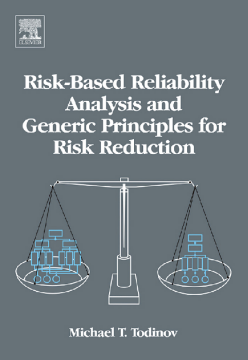
BOOK
Risk-Based Reliability Analysis and Generic Principles for Risk Reduction
(2006)
Additional Information
Book Details
Abstract
This book has been written with the intention to fill two big gaps in the reliability and risk literature: the risk-based reliability analysis as a powerful alternative to the traditional reliability analysis and the generic principles for reducing technical risk.
An important theme in the book is the generic principles and techniques for reducing technical risk. These have been classified into three major categories: preventive (reducing the likelihood of failure), protective (reducing the consequences from failure) and dual (reducing both, the likelihood and the consequences from failure). Many of these principles (for example: avoiding clustering of events, deliberately introducing weak links, reducing sensitivity, introducing changes with opposite sign, etc.) are discussed in the reliability literature for the first time.
Significant space has been allocated to component reliability. In the last chapter of the book, several applications are discussed of a powerful equation which constitutes the core of a new theory of locally initiated component failure by flaws whose number is a random variable.
- Offers a shift in the existing paradigm for conducting reliability analyses
- Covers risk-based reliability analysis and generic principles for reducing risk
- Provides a new measure of risk based on the distribution of the potential losses from failure as well as the basic principles for risk-based design
- Incorporates fast algorithms for system reliability analysis and discrete-event simulators
- Includes the probability of failure of a structure with complex shape expressed with a simple equation
"The referee finds this book quite interesting and recommends to the students of reliability and researchers to have a closer look at it so that further research can be initiated to develop tools hitherto were not possible and a realist approach to risk-based reliability design of systems is possible. This book should be a good addition to a library of books on reliability and risk."--International Journal of Performability Engineering
